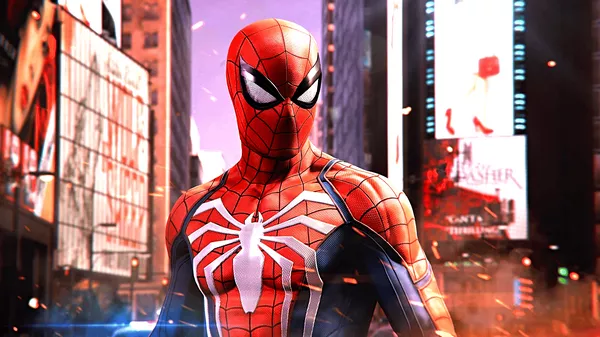As the Marvel Cinematic Universe (MCU) continues to captivate audiences with its interconnected narratives and diverse characters, one of the most eagerly awaited sequels is “Spider-Man: Across the Spider-Verse.” The first film, “Spider-Man: Into the Spider-Verse,” was a groundbreaking animated feature that introduced viewers to a multiverse of Spider-People. With the sequel on the horizon, fans are buzzing with anticipation, and a central question echoes: Who is the villain in “Spider-Man: Across the Spider-Verse”? In this comprehensive exploration, we delve into the clues, speculations, and the evolving landscape of the Spider-Verse to unravel the identity and significance of the antagonist in this highly anticipated animated sequel.
The Multiverse Unleashed: Setting the Stage for Spider-Man’s Next Chapter
Before diving into the specifics of the villain, it’s crucial to understand the broader context of the Spider-Verse. The multiverse, a central theme in the original film, opens up infinite possibilities for storytelling. With multiple dimensions and alternate versions of Spider-People, the canvas for narrative exploration becomes expansive and unpredictable.
“Spider-Man: Across the Spider-Verse” is poised to leverage the multiverse concept, introducing new characters and challenges that will test the mettle of Miles Morales and his fellow web-slingers. Against this backdrop, the identity of the villain takes on added significance, offering a glimpse into the threats that transcend dimensions.
Miles Morales: A Growing Legacy
Miles Morales, the central protagonist of the Spider-Verse films, has become a beloved character for fans of all ages. His introduction in “Into the Spider-Verse” marked a cultural milestone, bringing diversity and fresh perspectives to the superhero genre. As Miles grapples with the responsibilities of being Spider-Man, the emergence of a new antagonist promises to elevate the stakes and deepen the character’s growth.
The choice of villain becomes a narrative pivot, shaping Miles’s journey and providing a platform for exploring themes of identity, heroism, and the challenges of navigating a multiversal landscape.
Clues and Teasers: Unraveling the Web of Speculation
The process of identifying the villain in “Spider-Man: Across the Spider-Verse” involves dissecting official announcements, teaser trailers, and promotional material. Movie studios are adept at building anticipation through strategically released information, and the Spider-Verse sequel is no exception.
As fans analyze every frame of teaser footage and scrutinize promotional artwork, speculations abound regarding the potential villain. Clues may be hidden in visual cues, character interactions, or even the soundtrack, providing a rich tapestry for fans to unravel.
Returning Characters and New Faces: The Ensemble of Adversaries
“Spider-Man: Across the Spider-Verse” is expected to bring back familiar faces from the original film while introducing new characters from various dimensions. In the multiverse, villains can be alternate versions of known adversaries or entirely new entities with distinct motivations.
The dynamic between Miles Morales and the villain will likely be influenced by the unique circumstances of the multiverse, adding layers of complexity to the traditional hero-villain dynamic. The ensemble of adversaries contributes to the unpredictability of the narrative, keeping audiences on the edge of their seats.
The Role of the Multiverse in Shaping Villainy
The multiverse not only expands the possibilities for heroism but also presents a vast array of potential villains. From classic foes like the Kingpin to alternate versions of iconic adversaries, the multiverse allows for inventive reinterpretations of familiar characters.
The very nature of the multiverse challenges traditional notions of hero and villain dichotomies, offering opportunities for redemption, exploration of alternate motives, and unexpected alliances. In this context, the identity of the villain gains additional layers of nuance and intrigue.
Conclusion: Navigating the Multiversal Web of Expectations
As “Spider-Man: Across the Spider-Verse” approaches its release, the question of the villain serves as a focal point for fan discussions, speculations, and anticipatory excitement. The multiverse, with its kaleidoscopic array of dimensions, introduces an element of unpredictability, making the identification of the antagonist a thrilling mystery.
In the ever-expanding MCU, where each film contributes to the larger narrative tapestry, the role of the villain is crucial. It serves not only as a formidable adversary for our web-slinging heroes but also as a narrative device that propels character development, explores thematic depth, and keeps audiences invested in the overarching story.
As fans eagerly await the revelation of the villain in “Spider-Man: Across the Spider-Verse,” the journey becomes as significant as the destination. The multiverse invites viewers to navigate a web of expectations, embracing the unknown and celebrating the rich storytelling potential that comes with exploring alternate dimensions.
When the animated sequel finally swings into theaters, the identity of the villain will be unveiled, and audiences will witness the next chapter in Miles Morales’s evolution as Spider-Man. The multiversal web of possibilities is vast, and as the MCU continues to weave its narrative threads, the anticipation for “Spider-Man: Across the Spider-Verse” stands as a testament to the enduring allure of Marvel’s web-slinging hero and the excitement of exploring uncharted dimensions in the world of animation.

